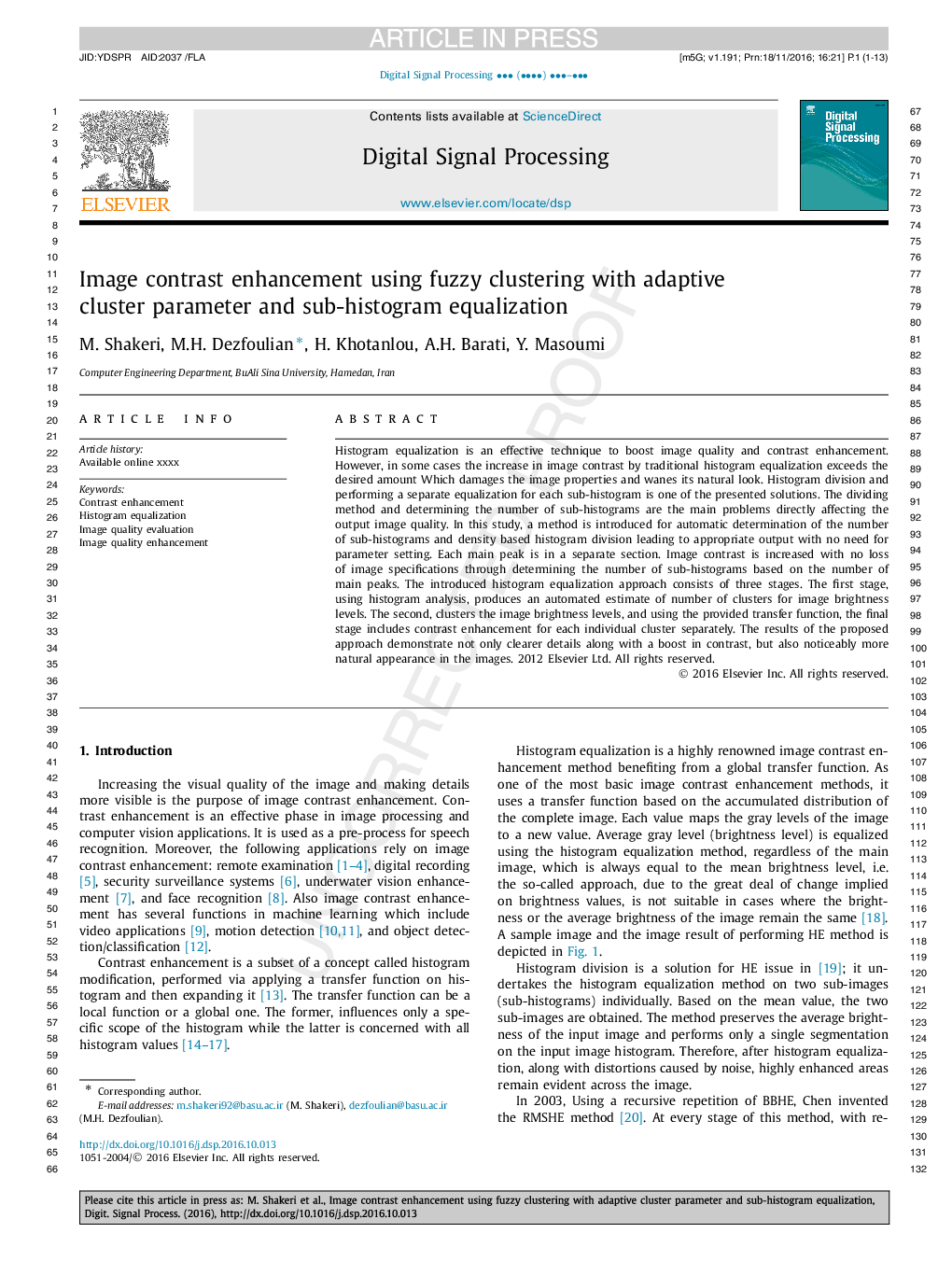| Article ID | Journal | Published Year | Pages | File Type |
|---|---|---|---|---|
| 4973903 | Digital Signal Processing | 2017 | 13 Pages |
Abstract
Histogram equalization is an effective technique to boost image quality and contrast enhancement. However, in some cases the increase in image contrast by traditional histogram equalization exceeds the desired amount Which damages the image properties and wanes its natural look. Histogram division and performing a separate equalization for each sub-histogram is one of the presented solutions. The dividing method and determining the number of sub-histograms are the main problems directly affecting the output image quality. In this study, a method is introduced for automatic determination of the number of sub-histograms and density based histogram division leading to appropriate output with no need for parameter setting. Each main peak is in a separate section. Image contrast is increased with no loss of image specifications through determining the number of sub-histograms based on the number of main peaks. The introduced histogram equalization approach consists of three stages. The first stage, using histogram analysis, produces an automated estimate of number of clusters for image brightness levels. The second, clusters the image brightness levels, and using the provided transfer function, the final stage includes contrast enhancement for each individual cluster separately. The results of the proposed approach demonstrate not only clearer details along with a boost in contrast, but also noticeably more natural appearance in the images.
Keywords
Related Topics
Physical Sciences and Engineering
Computer Science
Signal Processing
Authors
M. Shakeri, M.H. Dezfoulian, H. Khotanlou, A.H. Barati, Y. Masoumi,
